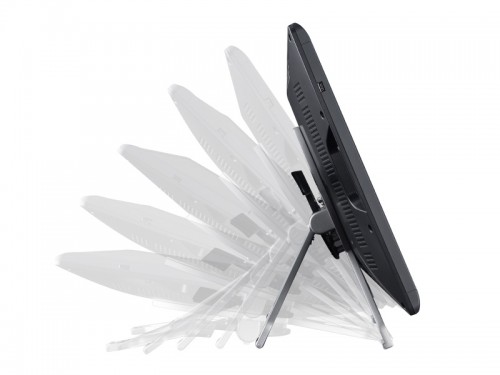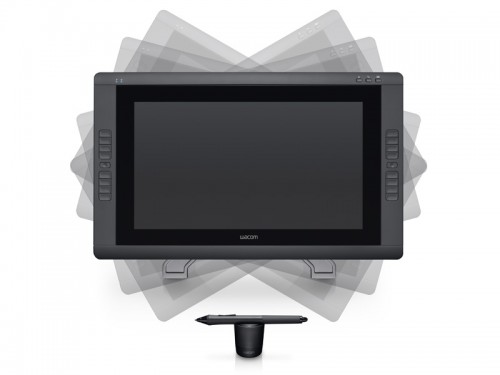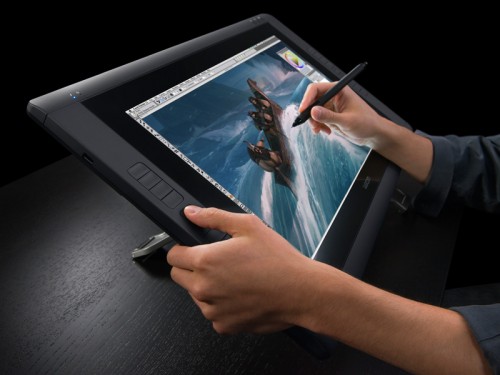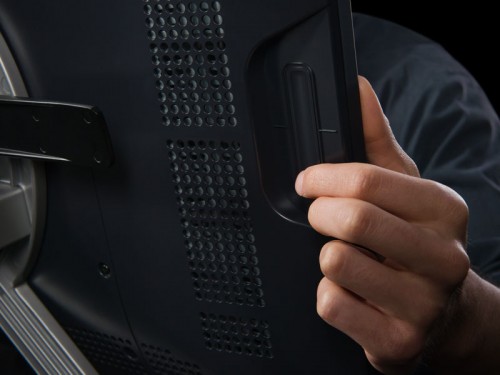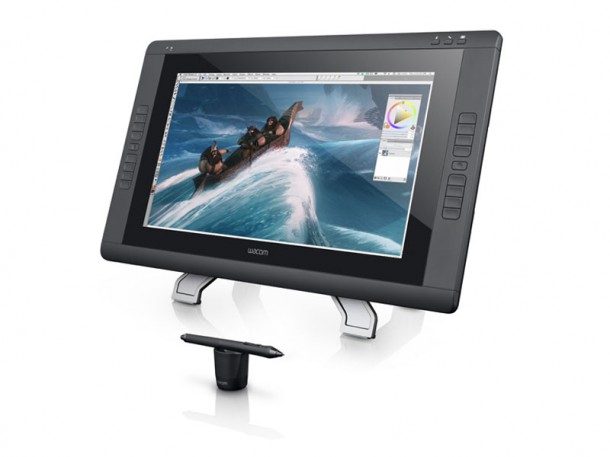Review: Wacom Cintiq 22HD pen display
Wacom’s Cintiq 24HD set a new benchmark for input devices. But by shaving off $600 from the price – not to mention a whopping 45 pounds in weight – the new 22HD goes one better, says Fernando Caire.
When we reviewed Wacom’s Cintiq 24HD pen display earlier this year, we were easily impressed by its large high-definition display, the custom key layout and the screen’s responsiveness. What was less impressive was the weight and restrictive movement of the counterweight stand.
In that review, we made numerous comparisons between the 24HD and the 21UX: its smaller, inferior sister model. Since then, Wacom has announced its new Cintiq lineup, including a replacement for the 21UX, the 22HD. It has the same key features as the 24HD, but lacks its ridiculous weight and, like the 21UX, can be turned 180 degrees left or right. At $1,999 – $600 less than the 24HD – is this a better choice for CG artists?
Physical specifications and setup
Right out of the box, there is an immediate and noticeable difference: the 22HD weighs in at only 18.7 pounds – less than a third of the weight of the back-breaking 63.8-pound 24HD. At 55mm thick, it’s also a fraction more slimline. Whereas just getting the 24HD out of the box was a two-person job (once it was set up, I hoped I never had to move it again), the 22HD is easy to move from place to place.
Setup is easy: you only need to put up the stand, slide the screen into place, and it’s ready to go. Unlike the 24HD, the screen pivots on the stand so it can be turned 180 degrees in either direction. The screen can also be laid down flat or pulled upright using the side levers, then locked into any position you want once the levers are released. Performing any of these actions is quick and easy, and will not interrupt your workflow.
The other thing that sets the 22HD apart is the button interface. Where as the 24HD had only 10 assignable ExpressKeys, the 22HD has 16: eight on each side. This will especially be handy for those who work in 3D and require the extra hotkey options at their disposal. The one thing I wish Wacom could have upgraded is the Touch Strips. The Touch Rings on the 24HD are efficient and got the results I needed quickly, since the wheel enabled me to scroll continuously without having to lift my finger or pause. With the Touch Strips, however, it’s necessary to slide your finger up or down, lift it, bring it back, and repeat until you get the desired result.
However, this is nit-picking: in all other respects, the Touch Strips perform well, and are conveniently positioned on the back of the device, directly behind the toggle buttons that change their function (each Touch Strip can have up to four), making it easy to switch function with your thumb while scrolling with your index finger. This feels incredibly comfortable and makes performing numerous functions using the Touch Strips a breeze.
Display resolution and pen sensitivity
The brightness of the 22HD’s display (230 cd/m2) is actually much higher than that of the 24HD (190 cd/m2) and with a viewing angle of 178 degrees, it would be difficult to not see your art work in full clarity, no matter where you stand. At 1,920 x 1,080 pixels and capable of displaying over 16.7 million colors, it should ensure your art pieces appear crystal clear. The color accuracy is pretty spot on but for those who really need it to be accurate, the 24HD (92% Adobe RGB) or the 24HD Touch (97% Adobe RGB) may be better for your needs.
And with 2,048 pressure levels and a 60-degree tilt angle, the pen flows smoothly and feels completely natural and very responsive. (This isn’t actually a change in specification, but if it ain’t broke, don’t fix it, right?)
The only thing I don’t understand is why gestural controls weren’t included in this model, given that they are supported in the 24HD touch, announced at the same time as the 22HD. When we reviewed the Intuos5 range of tablets, one of my favorite new features was the ability to use gesture controls to activate ExpressKeys and functions – and it isn’t as if they were confined to the largest tablet in the range.
It’s possible that Wacom has left out gestural controls to keep the 22HD cost-effective – the 24HD touch sells for a whopping $3,699 ($1,100 more than the 24HD) – but it would be nice to think that one day, there will be a Cintiq with this feature that won’t put quite such a hole in your bank account.
Overall verdict
Besides a few trivial complaints, this is the best pen display I have ever used – and probably the best drawing tablet available on the market. Yes, I know I said exactly the same thing about the 24HD, but the new model goes one better. It’s comfortable to use, 45 pounds lighter, has an additional 6 ExpressKeys, and the rotatable screen looks amazing. Given that it also shaves off $600 in price, and stops me putting out my back trying to lift it, the loss of two inches of screen space seems like a small price to pay. It’s like the good folks at Wacom read what I wanted and gave it to me in the shape of the Cintiq 22HD.
A few of the newer features available in other Wacom tablets would be nice in the future – but as of now, I consider this to be the best tablet available. I used to consider the 24HD second to none. Now, I must retract that statement: it’s second to the 22HD. If you really, really want that extra two inches of screen, and don’t mind the hassle of a mounted 64-pound tablet with fewer control keys then hey, more power to you. But for everyone else, I can’t recommend the Cintiq 22HD more highly. At $1,999, it’s worth every cent of the price.
Freelance artist Fernando Caire is an employee of The Gnomon Workshop and CG Channel’s Associate Editor. You can contact him at fernando [at] cgchannel [dot] com
Read the full specifications for the Cintiq 22HD on the Wacom site

